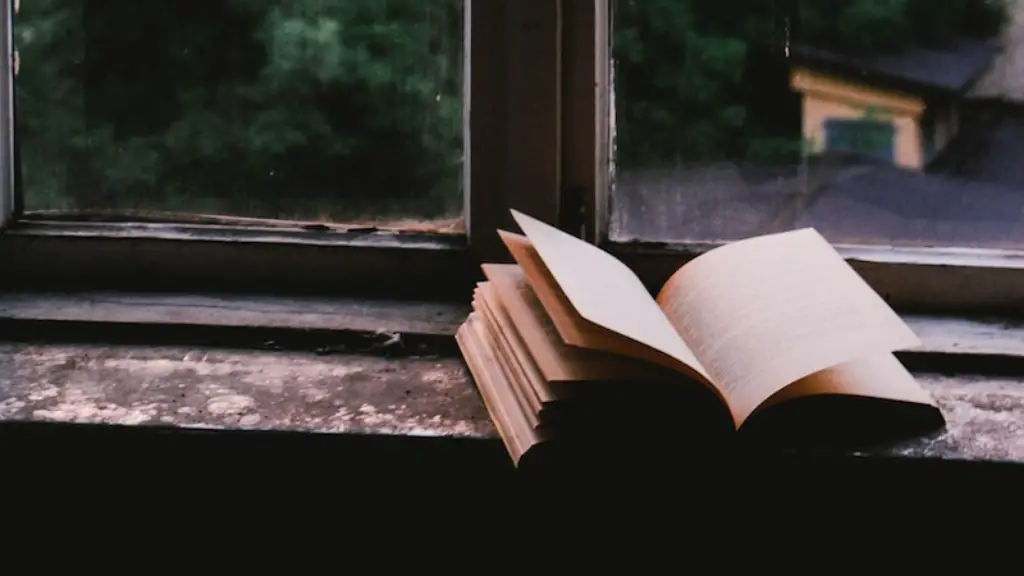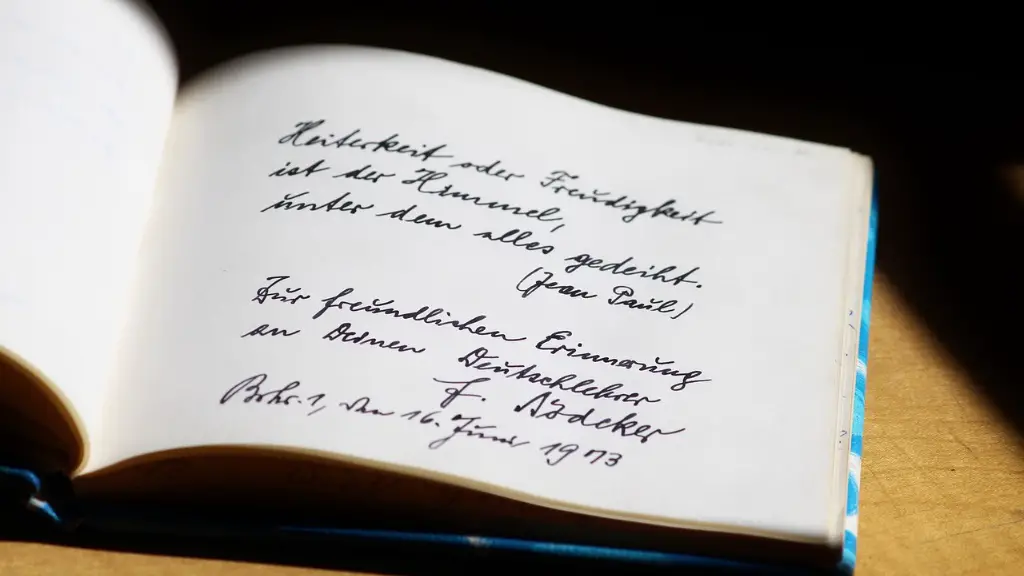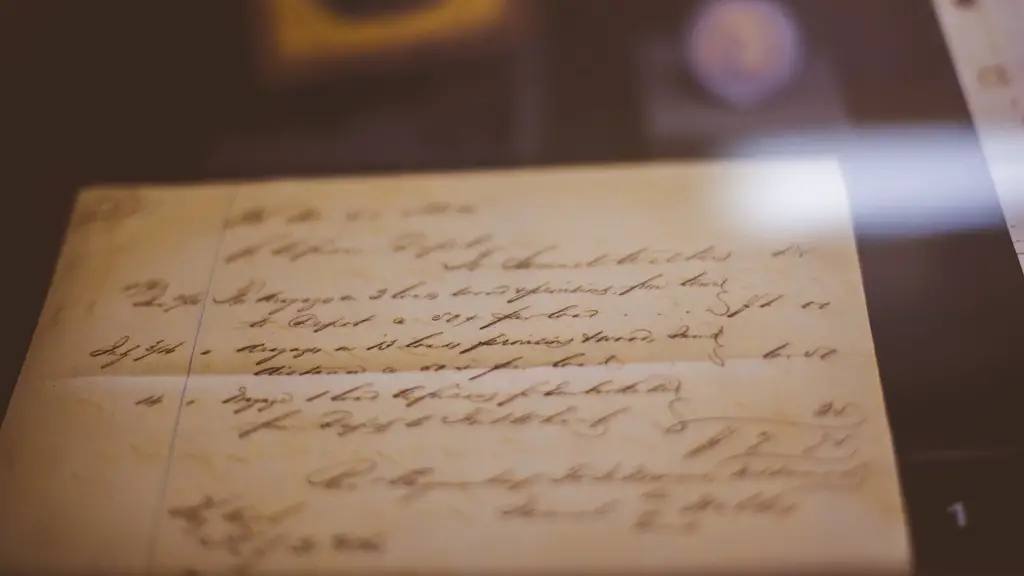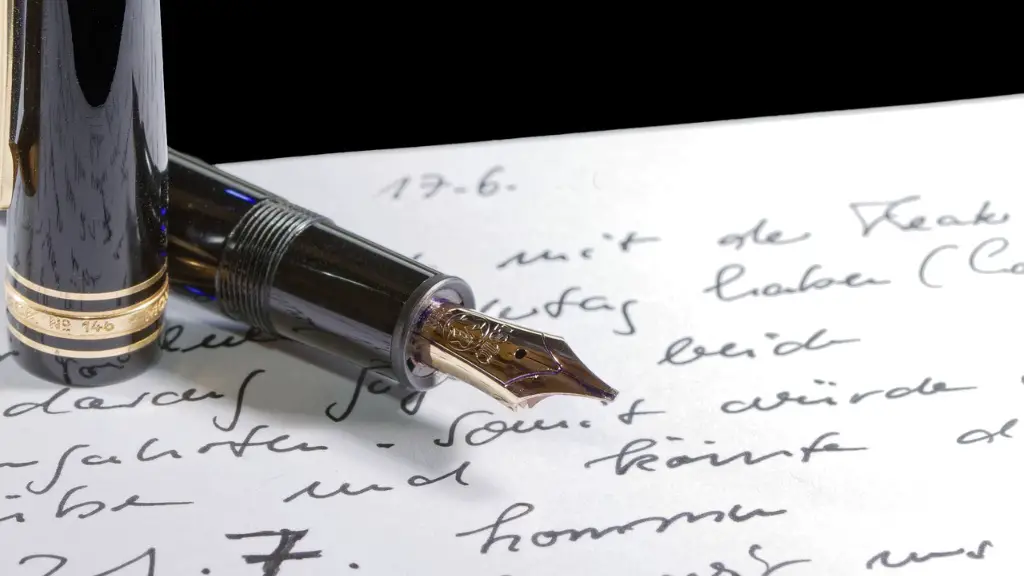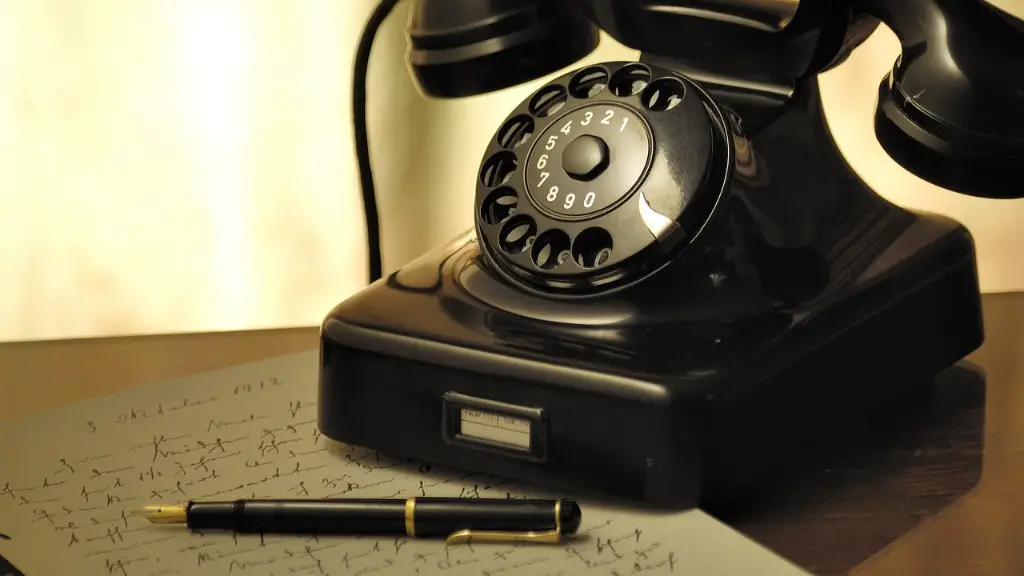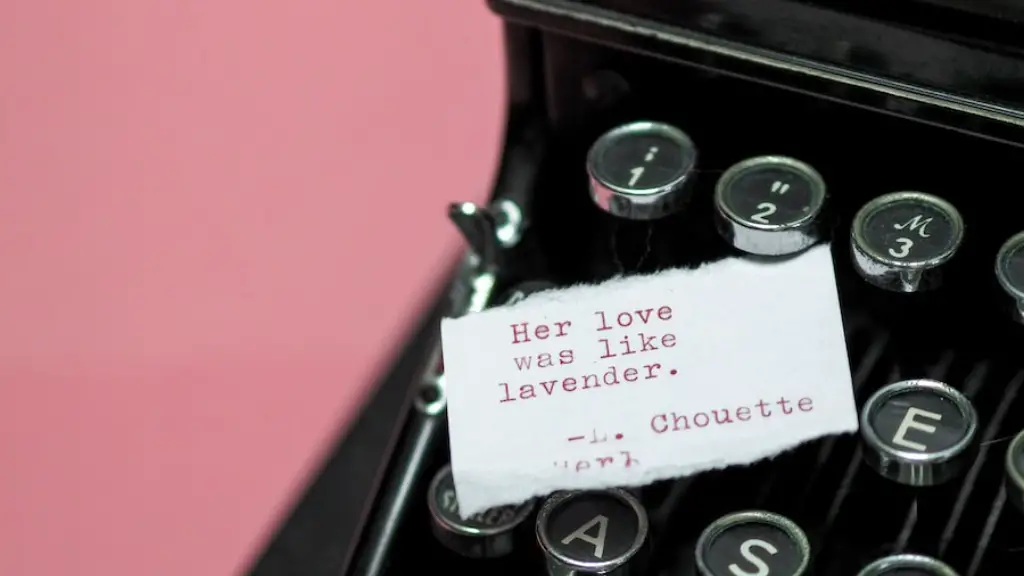A blazon is a poetic form of expressing praise for someone or something, often addressed to a beloved. This type of poem is usually directed at a person, animal, or object and offers praise for what makes them special, often in terms of their physical attributes or qualities. Traditionally, blazons are written in a formal, somewhat ritualistic style, and are often used to signify appreciation and respect.
Blazons were typically used in courtly love poetry, an ambivalent form of writing popular in the Middle Ages. In these poems, a man of courtly standing would present a woman of similar standing with a formal promise of loyalty, offered with a poetic but respectful consideration of her features and qualities. A blazon is a response to this kind of tribute, providing a detailed description of the woman’s beauty and worth.
In a blazon, lines are divided into three sections, which generally take the form of “her eyes, her hair, her mouth”, in a variety of combinations. Each item is described in detail, with a phrase or two declaring the woman’s character or the qualities that make her special, rather than just focusing on physical beauty. In blazons, colour is also used to evoke emotion in the reader – for example, hair can be “raven black” or “golden blonde”, depending on what feeling the poet wishes to convey.
Blazons could also be used to praise men or objects – a favorite pet, a prized possession, or a place. The poem would focus on the thing being praised, rather than the person offering the praise, in order to draw attention to its unique qualities. This helps make the poem more personal – rather than just offering a sweeping opinion, the words provide an insight into the individual’s perspective.
Unlike other poetic forms, blazons typically adhere to strict guidelines in terms of their style and structure: lines are usually composed in three-beat rhymes, the tone is typically formal and complimentary, and the subject of the poem always receives praise. By following these conventions, blazons are able to maintain a consistent structure, making them easier to recognize and appreciate.
Although blazons may seem out of date in today’s world, they are still a popular form of expression – especially as a way of conveying admiration and appreciation in a meaningful, poetic way. As long as the act of praising one’s beloved is celebrated, blazons will continue to be used – and loved.
Humility and Respect in Blazons
An important part of the blazon is that the poem also conveys humility and respect. Although the poet or speaker may be paying attention to the features of the person or thing being praised, they also acknowledge that they may be imperfect – they are not perfect, but they are still worthy of admiration. This kind of modesty is uncommon in the modern world, and speaks to the more polite conventions of the past.
Another aspect of humility in the blazon is that the individual praising the person or thing is not trying to impose their opinion on the reader; rather, they are trying to simply provide their own perspective and invite others to consider the same. This presents a far more balanced and approach than many other poetic forms, which may be heavily stylised and can sometimes feel disconnected from the writer’s personal experiences.
Ultimately, blazons provide an effective and respectful way of praising someone or something. They offer a unique insight into the individual’s perspective, while at the same time adhering to a consistent structure, which gives them a timeless quality.
Modern Blazons
Although the traditional form of blazons is still popular, modern poets have also taken the form in a new direction. Contemporary blazons often address issues that would have been considered inappropriate in the past, such as politics, gender, and race – or simply topics that may have been seen as too modern or irrelevant in the context of courtly love poetry.
While the structure of the poem can remain the same, modern blazons often contain more abstract language, as well as references that may not be immediately comprehensible to readers unfamiliar with the form. In this way, the poem can still be identified as a blazon, while maintaining an air of mystery and allowing contemporary poets to bring their own experiences and perspectives to the poem.
Today, blazons are more likely to be found on social media, blogs, and other online platforms than in lyric collections or in traditional courtly settings. This medium provides an accessible platform for individuals to share their own unique perspectives and appreciation for a person, animal, or object. Although modern blazons may still follow the conventional form, their content is often far more varied, embracing different themes and covering a range of topics.
Conclusion of Intent
A blazon poem is an interesting and unique way of expressing admiration and appreciation for something or someone. Although the form may have originated in the Middle Ages, it is still relevant today, with poets and writers adapting and expanding on the traditional conceits. Whether used to communicate love or respect, or simply to express the poet’s own personal thoughts and views, blazons are a way of conveying admiration in a meaningful and poetic manner.
Representation of Strength
In a blazon poem, the person, animal, or object is typically depicted with strength and power. In some cases, the subject may even be described in physical terms – for example, a woman may be praised for her beauty, her hair being described as ‘shining like the sun’ or her eyes ‘glowing like stars’. By emphasizing the subject’s positive attributes, the poet is indicating that they are an admirable figure, worthy of admiration and respect.
In some cases, a blazon may be composed to commemorate an event – such as a wedding or an anniversary. In this context, the poem can be used to express the poet’s feelings towards the couple or object being celebrated. For example, a blazon could highlight the couple’s devotion to each other, or the qualities that make them a good match, allowing the poet to express their own feelings of joy and goodwill.
It should also be noted that blazons are often linked to patriotism, as they can be used as an expression of national pride. Poets may focus on an individual’s contributions to their country, or praise a nation’s history and culture, emphasizing its strength and greatness. Through these descriptions, the poet can express their own admiration for a person, an animal, or an object, while also highlighting their love of their country.
The Power of Well Wishes
Blazons can also be used to offer well wishes. As a poem of praise and appreciation, a blazon is an ideal way to celebrate special occasions, such as birthdays and anniversaries. By conveying their feelings of admiration, the poet is expressing their own wishes for the recipient’s future success and happiness. This kind of tribute is especially meaningful for those who receive it, as it shows that their accomplishments and qualities are recognized and valued by others.
Additionally, a blazon is a powerful tool for comforting and consoling those who are dealing with difficult times. By offering words of encouragement and admiration, the poet can show the individual that their strength and resilience is appreciated and admired, even in the midst of hardships. This can be incredibly empowering for the person receiving the poem, helping them to maintain a positive outlook despite challenging circumstances.
Blazons are also a way of expressing gratitude. By focusing on the positive qualities of another person or thing, the poet is showing appreciation for their presence and impact, without expecting anything in return. This can be a meaningful act of generosity, reminding the recipient of the love and support they have received in the past, and inspiring them to continue building meaningful relationships in the future.
The Significance of the Arts in Blazons
Blazons are a reminder of the significance of the arts. Throughout history, artistic expressions such as poetry and song have been used to convey feelings of admiration and appreciation, as well as to mark special occasions and meaningful moments. By preserving these forms of creative expression, we are able to relive moments in our lives that may otherwise fade from memory. They can also provide us with an appreciation of our relationships and achievements, allowing us to reflect on how far we have come and how much we have accomplished.
In today’s world, when most of our communication takes place electronically, it can be easy to forget the power of the written word. However, blazons remind us that even seemingly mundane exchanges can be a source of comfort, joy, and inspiration. By taking the time to compose a blazon, individuals can express their admiration and appreciation for someone or something in a meaningful and lasting way, without the need for elaborate gifts or expensive words.
Ultimately, blazons offer a unique way of expressing admiration and respect. Though they may be regarded as old-fashioned or out of date, the form is still relevant today, with modern poets taking the traditional conceits and expanding on them in order to convey their own perspectives and experiences. As long as appreciation is valued, blazons will continue to be a meaningful way of expressing admiration and appreciation.
